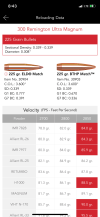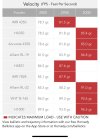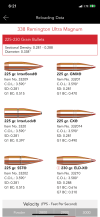DUSTY NOGGIN
Well-Known Member
was very busy that day too write out a super detailed replyHuh?
picking pow"d"er with the possibility of full case capacity (( typo ))
size brass to feel a crush fit when closing bolt , remove the ejector plunger from your bolt. then , you can soot the front and the back to see how much contact you're getting , without the feel of the the plunger spring
((( this cartridge will show false pressure signs , if given any headspace, i was able to alleviate my pressure signs like the OP and gain 1.5 grains of powder , just by sizing to crush fit when closing bolt
i think if you bump the normal .002 to .004 off you'll see pressure signs early as well )))
i think the OP over sized those brass slightly , the plunger holds the brass forward into the shoulder datum cone , gives bolt face gap , enough to slam back into the bolt , which shows more pressure signs than if held against the bolt face tightly , with same powder load
one of the bad things about this , if this diagnosis fixes this problem , is that if you ever over size by accident you can be right where you left off ,
for example , factory ammo of ultramag cases will almost always show some case head , extractor plunger transfer .... because they have to over size ( but still be in saami tolerances )
Last edited:



